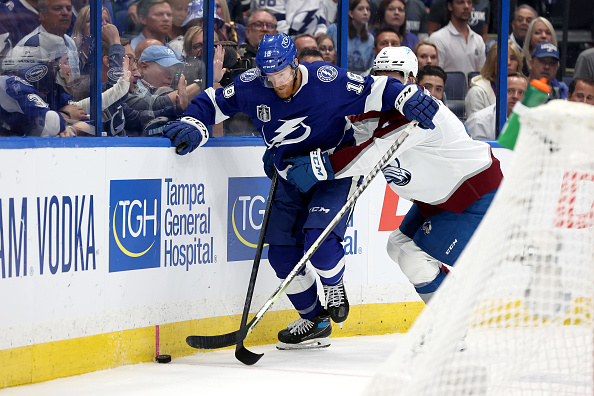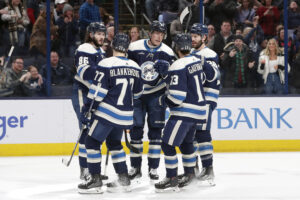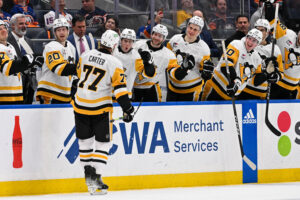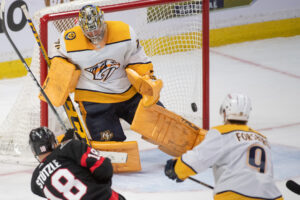NHL player development seems to always result in more questions than answers. How likely is it for a top pick to pan out? What makes a player a “steal”? Last Word On Hockey will be starting a new series on how to properly develop prospects from all different spots throughout the draft. This week’s piece involves draft picks in the back half of the first round and how they were used early in their careers.
NHL Player Development Of First-Round Picks
In the span of 2005 through 2015, there were 84 total selections made between 16th overall and 30th overall on forwards playing in North America. Looking at all 84 forwards, they were split into different categories. Those categories were “Forwards Deemed NHL-Ready and Brought In Immediately When Ready,” “Forwards Near NHL-Ready and Brought In Immediately When Near-Ready,” “Forwards Rushed Slightly,” “Forwards Rushed,” “Forwards Forced,” “A Little Patience,” “Patience,” and “Too Much Patience.”
There were 12 forwards who fell into the fourth category, “rushed,” on the list. Of those 12 players, two made their NHL impacts in their DY+6 seasons. Those players are Stefan Noesen and Riley Nash. In this piece, we will look at Nash.
In this piece, we will be using stats from eliteprospects (raw stats) and hockey-reference (ice time). Additionally, the analytics we are using are as follows: even-strength offence goals above replacement (EVO), even-strength defence goals above replacement (EVD), wins above replacement (WAR) and goals above replacement (GAR). Those analytics are from evolving-hockey (subscription required).
NHL Player Development Of Riley Nash
Nash, drafted 21st overall in the 2007 NHL draft by the Edmonton Oilers, came out of the Salmon Arm Silverbacks organization of the BCHL. In his DY-1 season, however, he played for the BCEHL U18 league with the Thompson Blazers AAA team. There, he scored 29 goals and 31 assists for 60 points in 31 games, for 1.936 points per game. That ranked seventh among the aforementioned 84 forwards in DY-1 production, albeit in a far weaker league than most. Upon joining the Silverbacks, he scored 38 goals and 46 assists for 84 points in 55 games, for 1.527 points per game. That ranked 10th among those same 84 forwards in DY production. After getting drafted, Nash would take his talents to Cornell University of the NCAA for the next three seasons, before heading to the AHL for two years.
In his first NCAA season, Nash scored 12 goals and 20 assists for 32 points in 36 games, for 0.889 points per game. That ranked 54th out of the 82 forwards who are still outside the NHL in DY+1 production. Nash followed that up with 13 goals and 22 assists for 35 points in 36 games for 0.972 points per game. That ranked 35th out of the 70 forwards still outside the NHL in DY+2 production. Finally, in his last year with Cornell, Nash scored 12 goals and 23 assists for 35 points in 30 games, for 1.167 points per game. That ranked first out of the 46 forwards still outside the NHL in DY+3 production. Nash would join the AHL’s Charlotte Checkers following that third NCAA season.
AHL Time For Nash
In his first AHL season, Nash played 79 games and scored 14 goals and 18 assists for 32 points, for 0.405 points per game. That ranked 20th out of the 30 players still outside the NHL in DY+4 production. Following that season, Nash would score eight goals and 12 assists for 20 points in 58 games, for 0.345 points per game. That ranked 15th out of the 23 forwards still outside of the NHL in DY+5 production. Following that second season in the AHL, Nash would finally get his first true NHL shot.
How Was Riley Nash Used
In his first true taste of NHL hockey, Nash would not stick for the full season. Instead, he would split between the AHL and NHL, with 51 AHL games, scoring 13 goals and 24 assists for 37 points. Meanwhile, he played 32 NHL games, where he averaged 12:48 time on ice per game. In that reserved role, he scored four goals and five assists for nine points. Similar to his raw stats, Nash’s performance analytically was uninspiring. His EVO (0.7) was not great, while his EVD (-0.5) also was rough, landing below replacement level. With those poor analytics at even-strength, his overall underlying stats, WAR and GAR, landed at exactly replacement level, which is a score of zero.
Following that extremely underwhelming first season, Nash would play exclusively in the NHL for 73 games, averaging 12:40 per game. Again, in a reserved role, Nash scored 10 goals and 14 assists for 24 points. His raw stats were improved, but the real step forward is seen in his analytics. Nash’s EVO (4.6) and EVD (2.2) were both incredibly improved from his rookie season. With the big even-strength improvement, Nash’s WAR (1.3) and GAR (7.1) both went up in a big way. The upside was starting to show with a big year two.
Opportunities Abound In Year Three
For his third season, Nash would again exclusively play in the NHL. In total, he played 68 games and averaged 16:19 per game. With a much larger role, Nash scored just eight goals and 17 assists for 25 points. Again, his production improved. But not as much as the Hurricanes likely hoped it would. Nash’s even-strength impacts pretty much flipped, with his EVO (2.2) dropping and his EVD (4.0) improving, while still remaining overall solid. His WAR (1.6) and GAR (8.5) improved slightly despite the drop in offensive impact.
Following that third season, in 2014-15, Nash would play one more season with the Hurricanes. In his final season with them, he scored 22 points in 64 games. Nash would join the Boston Bruins for the 2016-17 season and stay for two years. In total, he played 157 games, scoring 22 goals and 36 assists for 58 points. In the 2018-19 season, Nash joined the Columbus Blue Jackets for two and a half seasons, where he played 179 games, scoring 10 goals and 23 assists for 33 points, a rough stretch for him. Finally, in 2021-22, Nash split between three NHL teams and one AHL team: the Winnipeg Jets, Arizona Coyotes, and Tampa Bay Lightning. With those teams, he combined for 49 games played and four assists. Meanwhile, at the AHL level, he played 17 games and scored 18 points with the Syracuse Crunch, the Lightning affiliate.
Hindsight Is 20/20, But Not Needed Here
Riley Nash turned out just fine, though his potential was never realized. It was not due to a lack of opportunity, as he was given a solid role following a strong second season with the Hurricanes. However, a better player on the board in 2007 went just one pick later: Max Pacioretty. Both Nash and Pacioretty went down the NCAA path in their DY+1 seasons. The difference is, in both DY-1 and DY seasons, Pacioretty played in higher-level leagues than Nash. That led to him performing at over a point per game in his first NCAA season and would make his NHL impact immediately after that single NCAA season.
Additionally, another player taken a few picks after Riley Nash, played at a higher level and made a bigger impact at the NHL level, and sooner. That player is David Perron. Perron would immediately transition to the NHL the season directly following the draft. Perron was over a point-per-game as a QMJHL forward in his DY season. Nash turned out better than a good amount of the other first-rounders in 2007, with over 600 NHL games under his belt. But there were better options, who played at higher levels with success. It was not a bad pick by any means, but it was not the right pick. It wasn’t then, and with hindsight, it still isn’t.
Junior league stats via Elite Prospects, NHL stats via Hockey Reference, NHL analytics via Evolving Hockey
Main Photo:






